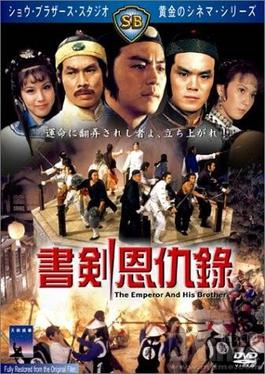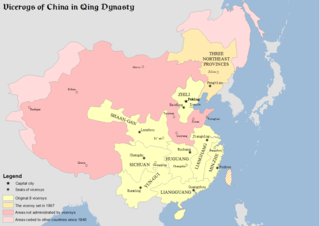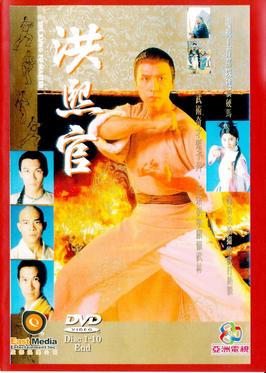Plot
The series is set in China during the reign of the Yongzheng Emperor of the Manchu-led Qing dynasty. The emperor orders Nalan Degang, a Manchu bannerman, to form and lead a secret death squad to eliminate the Great Ming Society, a Yangzhou-based underground movement seeking to overthrow the Qing dynasty and restore the Ming dynasty. The death squad is named "Flying Guillotines" after the highly dreaded weapon used by its members.
Fang Shiyu is the elder son of Fang De, the governor of Yangzhou. He spends his time enjoying life with his best friend, Nalan Dekai, who is Nalan Degang's younger brother. Zhu Lingce, the Black Guardian of the Great Ming Society, is a descendant of the imperial clan of the Ming dynasty. In the past, he had a romantic affair with Miao Cuihua, Fang Shiyu's mother, but chose to give up on her to pursue his quest to overthrow the Qing dynasty. Although Miao Cuihua married Fang De and bore him two sons, she still has romantic feelings for Zhu Lingce. It turns out later that Fang De is actually the White Guardian of the Great Ming Society and he has been secretly using his position as the governor of Yangzhou to help the society in their anti-Qing activities.
Fang Shiyu and Nalan Dekai travel to Shaolin Monastery to learn martial arts and master the Yijin Jing . Their friend, Song Tiezhu, succumbs to the temptation of glory and chooses to join Nalan Degang and serve the Qing government as a spy. When Nalan Degang captures Zhu Lingce, Fang Shiyu and his friends break into prison to save him. However, Song Tiezhu betrays them, causes Zhu Lingce to get killed, and exposes Fang De's true identity as the White Guardian of the Great Ming Society. While Fang De is arrested and taken to Beijing, Fang Shiyu manages to escape and he brings along Nalan Dekai, who was injured while helping him, to Shaolin Monastery for treatment. However, Song Tiezhu leads Qing forces to attack Shaolin and capture them. Fang Shiyu defeats Song Tiezhu in a fight and permanently disables him to prevent him from harming others again.
The Yongzheng Emperor uses a scheme to create a misunderstanding between Fang De and the Great Ming Society and tricks the society into believing that Fang De betrayed them. Fang De has no choice but to commit suicide to prove his innocence. In the meantime, Fang Shiyu trains hard in martial arts with the aim of seeking justice and avenging his father. He breaks into the Forbidden City and tries to assassinate the Yongzheng Emperor, but ultimately gives up on his quest for vengeance when he realises the best option is to spare the emperor's life because there will be further chaos and bloodshed if a power vacuum is created when the emperor dies.

Fong Sai-yuk is a semi-fictional Chinese martial artist and folk hero from Zhaoqing City, Guangdong Province of the Qing dynasty. Fong was also associated with Hung Hei-gun and the Five Elders of the Southern Shaolin Monastery. He was a disciple of Shaolin and his martial arts techniques were considered to have contributed to development of Hung Ga Kuen.
The Venerable Chi Sin Sim Si is a legendary Chinese martial artist, said to have been one of the Five Elders, survivors of the destruction of the Shaolin Temple by the Qing Dynasty (1644–1912). He is linked to many southern Chinese martial arts including the five major family styles of Hung, Lau and Choy gar, Lee gar and Mok gar, Ng Ga Kuen/Ng Gar King and Wing Chun.

Bak Mei is said to have been one of the legendary Five Elders — survivors of the destruction of the Shaolin Monastery by the Qing dynasty (1644–1912) — who, according to some accounts, betrayed Shaolin to the imperial government. He shares his name with the South Chinese martial art attributed to him.

Fujian White Crane, also known as White Crane Style is a Southern Chinese martial art that originated in Yongchun County, Fujian (福建) province. According to oral tradition, the style was developed by Fang Qiniang, a female martial artist. It is associated with traditional fighting techniques, including long range, but is most similar to close-quarter or hand-to-hand combat. It is most recognizable by the way the fighter imitates a bird's pecking or flapping of wings. While some white crane styles make use of traditional weapons, others have discontinued the use of weaponry.
In Southern Chinese folklore, the Five Elders of Shaolin, also known as the Five Generals are the survivors of one of the destructions of the Shaolin temple by the Qing Dynasty, variously said to have taken place in 1647 or in 1732.

Hung Hei-gun or Hong Xiguan (1745—1825) was a Chinese martial artist who lived in the Qing dynasty. He was also an influential figure in the Southern Shaolin school of Chinese martial arts. His name is also alternatively romanised as Hung Hei-koon, Hung Hei-kwun, Hung Hsi-kuan, and similar renditions. He was believed to be the creator and founder of Hung Ga Kuen.
Young Hero Fang Shiyu is a 1999 Hong Kong television series based on the story of Chinese folk hero Fang Shiyu. It starred Dicky Cheung as the titular protagonist.
The lei tai fighting stage has been the subject of various types of media; including Chinese film, video games, television, Literature, and music.

Shaolin Temple is a Shaw Brothers del 1975 film directed by Chang Cheh. It is one of the Shaolin Temple themed martial arts films and concerns their rebellion against the Qings, with an all-star cast featuring the second and third generations of Chang Cheh's stable of actors including David Chiang, Ti Lung, Alexander Fu Sheng and Chi Kuan Chun, as well as cameo appearances by several of the actors that would later become collectively known as the Venoms mob. The film serves as a pseudo prequel to Five Shaolin Masters.

The Emperor and His Brother is a 1981 Hong Kong wuxia film based on Louis Cha's novel The Book and the Sword. Produced by the Shaw Brothers Studio, the film was directed by Chor Yuen and starred Ti Lung, Jason Pai and Lo Lieh in the leading roles.

The Viceroy of Liangguang or Viceroy of the Two Guangs, was one of eight regional Viceroys during the Ming and Qing dynasties. The two Guang referred to Guangdong and Guangxi provinces. The areas under the Viceroy's jurisdiction included present-day Guangdong and Guangxi provinces, as well as Hainan Province.

The Book and the Sword is a 2008 Chinese television series adapted from Louis Cha's novel of the same title. The series was first broadcast on CETV-3 in China in 2009. It starred Qiao Zhenyu, Adam Cheng, Niki Chow, and Liu Dekai.

Huang Taizi Mishi is a 2004 Chinese television series produced by You Xiaogang. The series is the second instalment in a series of four television series about the history of the early Qing dynasty. It was preceded by Xiaozhuang Mishi (2003), and followed by Taizu Mishi (2005) and Secret History of Kangxi (2006), all of which were also produced by You Xiaogang.

The Kung Fu Master (洪熙官) is a 1994 Hong Kong martial arts television series directed by Benny Chan and starring Donnie Yen as the titular protagonist. Produced by ATV and TVB, the series aired on its channel ATV Home and TVB Jade from 16 August to 23 September 1994.

The Deer and the Cauldron is a Chinese television series adapted from Louis Cha's novel The Deer and the Cauldron. It was directed by Lai Shui-ching, and starred Han Dong, Wei Qianxiang and others. The series was shot from September–December 2013, and first aired on Anhui TV, Sichuan TV and Yunnan TV from 20 December 2014 to 9 January 2015.
Burning Paradise is a 1994 Hong Kong action film directed by Ringo Lam. The film is set in the Qing dynasty and stars Willie Chi Tian-sheng as Fong Sai Yuk and Yang Sheng as Hung Hei-kwun.
Miu Hin (苗显) was one of the Five Elders of Shaolin who survived the destruction of one of the Shaolin Monasteries during the Qing dynasty.
Events from the year 1662 in China.
Consort Fang, of the Han Chinese Chen clan, was a consort of Qianlong Emperor. She and her brothers were then inducted into the a bondservant company of the Bordered Yellow Banner of the Han Chinese Eight Banners since it was required for all consorts of Qing emperors to belong to one of the Eight Banners.









